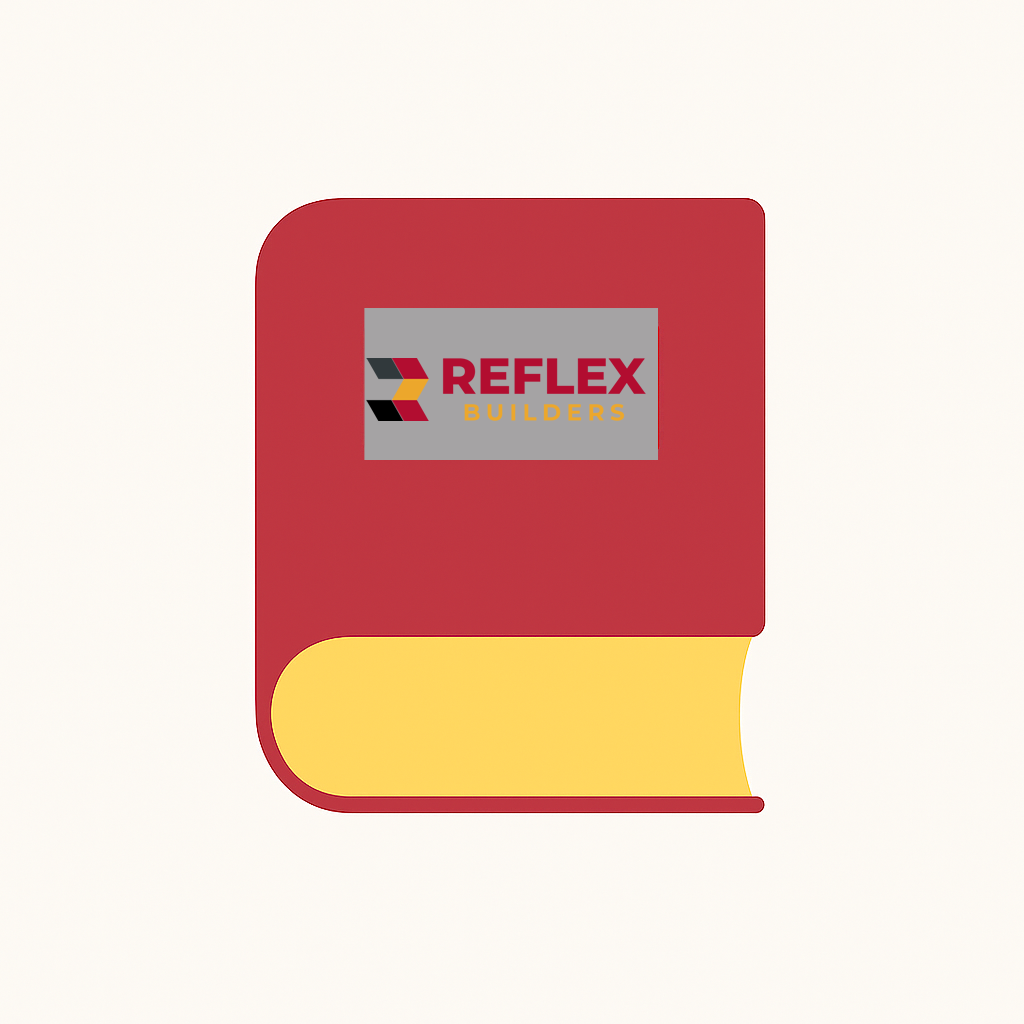2-Part Epoxy refers to a two-component adhesive system consisting of a resin and a hardener that, when mixed in precise ratios, undergo a chemical curing process to form a high-strength, durable polymer bond. This thermosetting adhesive system provides exceptional bonding strength, chemical resistance, and dimensional stability across a wide range of substrates including metals, concrete, wood, ceramics, and composites. 2-part epoxy systems are essential in construction applications requiring permanent structural bonds, crack repairs, and protective coatings where single-component adhesives cannot provide adequate performance or environmental resistance.
Other Names
Two-component epoxy, structural epoxy, epoxy resin system, dual-component adhesive, thermoset epoxy, chemical anchor epoxy, structural adhesive
History
1930s-1940s: Epoxy Chemistry Discovery
Swiss chemist Pierre Castan and American chemist Sylvan Greenlee independently developed epoxy resin chemistry in the late 1930s, creating the foundation for modern 2-part epoxy systems. Early formulations required high-temperature curing and found initial applications in electrical insulation and aircraft components during World War II. The military’s need for lightweight, high-strength bonding solutions accelerated epoxy development and manufacturing capabilities.
1950s-1960s: Commercial Development
Post-war industrial expansion drove commercial epoxy development, with companies like Shell Chemical and Dow Chemical introducing room-temperature curing systems suitable for construction applications. The development of aliphatic and aromatic amine hardeners enabled predictable curing characteristics and improved handling properties. Early construction applications included concrete crack injection and steel reinforcement bonding.
1970s-1980s: Construction Industry Adoption
The infrastructure maintenance crisis of the 1970s created demand for reliable concrete and steel repair materials, leading to widespread adoption of 2-part epoxy systems. Development of specialized formulations for underwater curing, cold-weather applications, and vertical surface installations expanded the range of construction applications. Structural engineering acceptance of epoxy bonding enabled new repair and retrofitting techniques.
1990s-2000s: Performance Enhancement
Advanced polymer chemistry produced 2-part epoxy formulations with enhanced properties including improved flexibility, faster cure times, and reduced temperature sensitivity. The introduction of modified epoxies with urethane, silicone, and rubber additives provided systems optimized for specific applications. Quality control improvements and standardized testing procedures increased reliability and user confidence.
2010s-2020s: Specialized Applications
Environmental regulations drove development of low-VOC and solvent-free 2-part epoxy systems suitable for occupied buildings and sensitive environments. Nanotechnology incorporation improved mechanical properties and provided self-healing capabilities in specialized formulations. Advanced testing methods including fracture mechanics and long-term durability studies refined application guidelines and performance predictions.
2020s-Present: Sustainable Formulations
Current research focuses on bio-based epoxy resins derived from renewable sources including plant oils and recycled materials while maintaining performance characteristics. Smart epoxy systems with embedded sensors enable real-time monitoring of cure progress and structural performance. Digital documentation systems track material properties and installation conditions for improved quality control and warranty support.
Technical Specifications
Chemical Composition and Properties
Typical 2-part epoxy systems consist of bisphenol-A or bisphenol-F based resins with molecular weights ranging from 350-4000, combined with amine or anhydride hardeners that cross-link to form three-dimensional polymer networks. Cured properties include compressive strengths of 8,000-15,000 PSI, tensile strengths of 3,000-8,000 PSI, and flexural strengths of 8,000-20,000 PSI depending on formulation. Glass transition temperatures range from 40°C to 180°C, determining service temperature limitations and thermal cycling performance.
Mixing and Cure Characteristics
Mix ratios vary by manufacturer but commonly range from 1:1 to 10:1 by volume or weight, requiring precise measurement for proper cure development. Working times range from 5 minutes for fast-cure systems to 2 hours for slow-cure formulations, with full cure typically achieved in 24-72 hours at room temperature. Accelerated curing at elevated temperatures can reduce cure time to 2-6 hours, though thermal profiles must be controlled to prevent thermal shock and ensure optimal properties.
Applications
Structural Concrete Repair
2-part epoxy injection systems effectively seal and strengthen concrete cracks from 0.1mm to 5mm width, restoring structural integrity and preventing water infiltration. Structural bonding applications include steel plate bonding for flexural strengthening, carbon fiber reinforced polymer (CFRP) installation, and precast concrete connections. Surface preparation typically requires clean, dry substrates with roughened surfaces achieving 150-300 micron profile for optimal bond development.
Anchor and Fastener Installation
Chemical anchoring with 2-part epoxy provides high-strength connections in concrete, masonry, and steel substrates where mechanical anchors cannot achieve required capacity. Installation involves drilling precise holes, cleaning to remove debris, and injecting epoxy before inserting threaded rods or rebar. Cure times range from 8-72 hours depending on temperature and formulation, with full design loads typically achieved after complete cure.
Best Practices
Surface Preparation Requirements
Substrate preparation is critical for 2-part epoxy performance, requiring removal of all loose material, oil, grease, and surface contaminants through mechanical cleaning, chemical degreasing, or abrasive blasting. Concrete surfaces should be mechanically abraded to expose sound substrate and achieve specified surface profile. Steel surfaces require blast cleaning to achieve SSPC-SP10 near-white metal finish or equivalent surface preparation standard.
Mixing and Application Procedures
Accurate measurement of resin and hardener components using calibrated dispensing equipment ensures proper stoichiometric ratios for complete cure development. Mixing should be thorough but minimize air entrainment, typically requiring 2-3 minutes of mechanical mixing for small batches. Environmental conditions including temperature, humidity, and air movement affect working time and cure characteristics, requiring monitoring and adjustment of application procedures.
Industry Standards
Testing and Performance Standards
ASTM D4541 establishes pull-off testing procedures for measuring adhesive bond strength to concrete and steel substrates. ACI 546 provides guidelines for concrete repair material selection and application procedures including 2-part epoxy systems. ICRI (International Concrete Repair Institute) guidelines specify surface preparation requirements and quality control procedures for epoxy bonding applications.
Material Qualification Requirements
Structural applications typically require epoxy systems meeting specific performance criteria including minimum bond strength, creep resistance, thermal cycling durability, and chemical resistance. Third-party testing by accredited laboratories verifies compliance with project specifications and industry standards. Quality control programs must include batch testing, storage condition monitoring, and periodic performance verification.
Key Considerations
Planning Phase
Material selection requires evaluation of service conditions including temperature range, chemical exposure, load requirements, and expected service life. Environmental factors including substrate moisture content, ambient temperature during application, and cure time limitations affect system selection and application scheduling. Quantity calculations must account for surface irregularities, joint widths, and material waste factors typically ranging from 10-20%.
Implementation
Temperature control during application is critical, as temperatures below 50°F may prevent proper cure while temperatures above 90°F can reduce working time significantly. Humidity levels above 85% can interfere with cure development in some formulations, requiring dehumidification or alternative product selection. Batch size limitations based on working time require coordination of mixing and application activities to prevent material waste.
Quality Control
Field testing includes pull-off testing to verify achieved bond strength, typically performed 24-72 hours after application depending on cure schedule. Visual inspection should identify incomplete mixing, air voids, or application defects requiring repair. Documentation should include material batch numbers, mixing ratios, environmental conditions, and test results for warranty and maintenance purposes.
Safety Requirements
Personal protective equipment includes chemical-resistant gloves, safety glasses, and respiratory protection when working in confined spaces or poorly ventilated areas. Skin contact with uncured epoxy components can cause sensitization and allergic reactions, requiring immediate washing with soap and water. Material safety data sheets provide specific handling, storage, and emergency response requirements for each product system.
Maintenance
Periodic inspection of epoxy-bonded systems should identify signs of debonding, cracking, or degradation requiring remedial action. Environmental exposure may cause surface chalking or discoloration without affecting structural performance, though UV protection may be required for exterior applications. Repair procedures typically require complete removal of failed material and surface re-preparation before reapplication.
Common Issues
Improper mixing ratios result in incomplete cure, reduced strength, or tacky surfaces that require complete removal and reapplication. Surface contamination from oil, moisture, or chemical residues prevents proper adhesion and creates weak interfaces prone to failure. Temperature-related problems include slow cure in cold conditions, shortened working time in hot conditions, and thermal shock from rapid temperature changes during cure.
Project Impact
Cost-Effectiveness and Performance
2-part epoxy systems typically cost 3-5 times more than mechanical fasteners but provide superior load distribution, corrosion resistance, and durability in demanding applications. Installation labor costs are generally lower than mechanical alternatives due to reduced drilling requirements and simplified procedures. Long-term maintenance costs are typically reduced through improved durability and reduced susceptibility to environmental degradation.
Structural Performance Benefits
Epoxy bonding provides continuous load transfer across bonded surfaces, reducing stress concentrations common with mechanical fasteners. The ability to bond dissimilar materials enables innovative design solutions not possible with conventional connection methods. Properly installed epoxy systems often outlast the substrates they connect, providing long-term structural reliability.
Industry Impact
Infrastructure Maintenance Revolution
2-part epoxy systems have transformed infrastructure maintenance by enabling effective repair of deteriorated concrete and steel structures without complete replacement. The technology has extended service life of bridges, buildings, and industrial facilities while reducing maintenance costs and construction disruption. Advanced formulations continue to expand the range of applications and environmental conditions where epoxy repair is viable.
Innovation in Construction Methods
Epoxy bonding technology has enabled new construction techniques including post-installed connections, modular construction systems, and hybrid material assemblies combining concrete, steel, and composite materials. The reliability of epoxy bonding has influenced building codes and design standards, allowing engineers greater flexibility in connection design and repair strategies.
Current Debates
Long-Term Durability and Service Life
The construction industry continues debating the long-term durability of 2-part epoxy systems in critical structural applications, particularly regarding creep behavior and environmental degradation over 50-100 year design lives. While laboratory testing and 30+ years of field experience demonstrate excellent performance, some engineers remain conservative about relying solely on epoxy bonding for primary structural connections. Research into accelerated aging tests and long-term monitoring is providing additional confidence in epoxy system durability.
Environmental Impact and Sustainability
Growing environmental awareness has prompted discussions about the sustainability of petroleum-based epoxy systems and their disposal at end-of-life. While bio-based epoxy resins show promise, questions remain about performance equivalency and cost-effectiveness compared to conventional systems. The industry is exploring recycling options for epoxy waste and developing formulations with reduced environmental impact throughout their lifecycle.
Related Technologies
Advanced Dispensing and Mixing Systems
Automated dispensing equipment ensures precise mix ratios and reduces operator error in critical applications. Static mixing nozzles enable consistent mixing without introducing air bubbles that could compromise bond strength. Dual-cartridge systems with integrated mixing provide convenient packaging for smaller applications while maintaining material freshness and ease of use.
Performance Monitoring Technologies
Embedded sensors in epoxy systems enable real-time monitoring of cure development and long-term structural performance. Non-destructive testing methods including ultrasonic and thermal imaging provide quality assurance without damaging installed systems. Digital documentation systems track material properties, installation conditions, and performance data for improved maintenance planning and warranty support.
Research and Development
Next-Generation Formulations
Research into self-healing epoxy systems incorporates microcapsules containing healing agents that activate when cracks develop, extending service life and reducing maintenance requirements. Nanoparticle reinforcement using carbon nanotubes, graphene, and ceramic nanoparticles enhances mechanical properties while maintaining workability. Smart epoxy systems with shape-memory properties enable applications in adaptive structures and self-monitoring systems.
Sustainable Material Development
Bio-based epoxy resins derived from renewable feedstocks including plant oils, lignin, and recycled polymers are advancing toward commercial viability while maintaining performance characteristics. Recyclable epoxy systems designed for disassembly enable material recovery at end-of-life. Life cycle assessment tools help optimize formulations for reduced environmental impact throughout production, use, and disposal phases.
FAQs
What happens if I don’t mix 2-part epoxy in the correct ratio?
Incorrect mixing ratios result in incomplete chemical cure, leading to reduced strength, poor chemical resistance, and potentially tacky or soft surfaces that never fully harden. Excess resin creates a brittle system, while excess hardener can cause rapid heat generation and cracking. Always follow manufacturer specifications for precise mixing ratios.
How long does 2-part epoxy take to reach full strength?
Working time ranges from 5 minutes to 2 hours depending on formulation, but full strength development typically requires 24-72 hours at room temperature. Elevated temperatures can accelerate cure to 2-6 hours, while cold conditions may extend cure time to several days. Full design loads should not be applied until complete cure is achieved.
Can 2-part epoxy be used on wet surfaces?
Most standard epoxy systems require dry surfaces for proper adhesion, though specialized underwater-curing formulations are available for submerged applications. Surface moisture content should typically be below 4% for concrete and completely dry for steel. Moisture-tolerant formulations may accept slightly damp conditions but generally perform better on dry substrates.
What’s the difference between structural and non-structural epoxy?
Structural epoxies are formulated for load-bearing applications with high strength, modulus, and durability requirements typically meeting specific performance standards. Non-structural epoxies prioritize ease of application, appearance, or specific properties like flexibility or chemical resistance rather than maximum strength. Always specify structural-grade epoxy for load-bearing applications.
How do I remove cured 2-part epoxy?
Mechanical removal using grinders, chisels, or abrasive blasting is typically required for cured epoxy systems. Chemical strippers may soften some formulations but rarely provide complete removal. Heat application can help soften epoxy for mechanical removal, though care must be taken to avoid thermal damage to substrates. Complete removal often requires surface re-preparation.
References
- American Concrete Institute. (2019). ACI 546 – Guide to Concrete Repair
- ASTM International. (2021). ASTM D4541 – Standard Test Method for Pull-Off Strength of Coatings Using Portable Adhesion Testers.
- International Concrete Repair Institute. (2020). ICRI Guidelines – Concrete Surface Preparation and Repair Guidelines.
- SSPC: The Society for Protective Coatings. (2018). SSPC Standards – Surface Preparation Standards for Steel.






